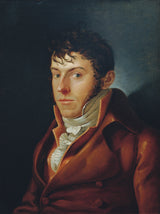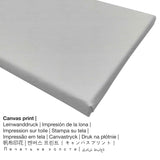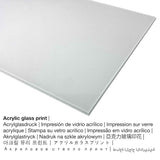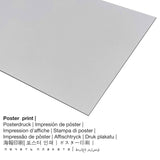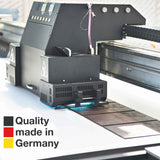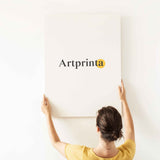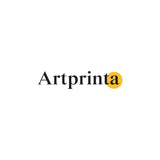Philipp Otto Runge, 1808 - Onye na-ese ihe na onye ode akwụkwọ Friedrich August von Klindowström - mbipụta nka mara mma.
Ụtụ gụnyere. Mbupu gbakọrọ na ndenye ọpụpụ.
Nkọwapụta eserese a akpọrọ "The painter and writer Friedrich August von Klinkowström"
The nkà nke oge a ọrụ nka mere site na German artist Philipp Otto Runge. Nke kariri 210 ụdị izizi nke afọ gbara akụkụ ndị a: 65 x 48 cm - akụkụ etiti: 78 x 62 x 8 cm. Oil on canvas was used by the German artist as the medium of the piece of art. Besides, the artwork forms part of the art collection of Belvedere located in Vienna, Austria. With courtesy of: © Belvedere, Vienna, nọmba ngwa ahịa: 2840 (ikike ngalaba ọha). The creditline of the artwork is the following: purchase from art dealer Dr. Ferdinand Nagler, Vienna in 1928. What is more, the alignment of the digital reproduction is in portrait format with a ratio of 3 : 4, which means that ogologo bụ 25% mkpụmkpụ karịa obosara. Philipp Otto Runge was a male poet, painter, whose artistic style was primarily Romanticism. The Romanticist painter was born in 1777 in Wolgast, Mecklenburg-Vorpommern, Germany and deceased at the age of 33 in 1810 in Hamburg, Hamburg state, Germany.
Ozi ndabere na mpempe nka pụrụ iche
| Aha nka nka: | "The painter and writer Friedrich August von Klinkowström" |
| Nhazi nke ihe nka: | sere |
| Otu sara mbara: | nkà nke oge a |
| Time: | 19th narị afọ |
| Ekepụtara: | 1808 |
| Ogologo afọ nka nka: | ihe karịrị afọ 210 |
| Ihe osise izizi: | mmanụ na kwaaji |
| Nha ihe osise izizi: | 65 x 48 cm - akụkụ etiti: 78 x 62 x 8 cm |
| Ụlọ ihe ngosi nka / ebe: | Belvedere |
| Ebe ngosi nka: | Vienna, Austria |
| E Nwere na: | Belvedere |
| License: | ngalaba ọha |
| Site n'aka: | © Belvedere, Vienna, nọmba ngwa ahịa: 2840 |
| Ebe kredit nke ọrụ nka: | purchase from art dealer Dr. Ferdinand Nagler, Vienna in 1928 |
Tebụl nkọwa omenkà
| Aha onye nka: | Philipp Otto Runge |
| Aha utu aha: | Runge Ph. Otto, Runge Ph. O., Runge Otto Philipp, Philip Otto Runge, Runge, phil. otto runge, Ph. O. Runge, Runge Otto, Runge Philipp Otto, Philipp Otto Runge |
| okike nke onye nka: | nwoke |
| Nationality: | German |
| Ọrụ: | onye na-ede uri, onye na-ese ihe |
| Obodo onye nka: | Germany |
| Nkewa onye nka: | omenkà nke oge a |
| Ụdị nke onye na-ese ihe: | Ihunanya |
| Ndụ: | 33 afọ |
| Afọ ọmụmụ: | 1777 |
| Ebe omuma: | Wolgast, Mecklenburg-Vorpommern, Germany |
| Nwuru: | 1810 |
| Nwuru na (ebe): | Hamburg, Hamburg State, Germany |
Ngwa ngwaahịa a na-ahọpụta
The product dropdown menu ofers you the opportunity to select your individual material and size. Choose among the following product options now to match your preferences in size and material:
- Kwaaji: The printed canvas, which shall not be mistaken with a painting on a canvas, is an image applied on a cotton canvas. A canvas generates a typical look of three-dimensionality. Besides, canvas produces a cosy and warm feeling. A canvas print of your favorite masterpiece will provide you with the unique opportunity of transforming your art print into a large collection piece like you would see in a true gallery. How do I hang a canvas print on my wall? The advantage of canvas prints is that they are relatively low in weight, which implies that it is easy to hang up the Canvas print without any wall-mounts. A canvas print is suited for all kinds of walls.
- Poster (akwa akwa akwa): A poster print is a printed flat canvas paper with a slightly rough surface texture. Please keep in mind, that depending on the absolute size of the poster print we add a white margin between 2-6cm round about the work of art, which facilitates the framing with your custom frame.
- Mbipụta iko acrylic (nke nwere ezigbo mkpuchi iko): An print on acrylic glass, often denoted as a plexiglass print, will turn the original artwork into lovely home decoration. Moreover, the acrylic print forms a distinct alternative to canvas or aluminium dibond fine art prints. The great upside of a plexiglass fine art print is that contrasts and also smaller image details will be more visible because of the delicate gradation.
- Aluminom ihe eji eme ihe: Aluminium Dibond prints are metal prints with a true effect of depth - for a modern look and a non-reflective surface structure. For the Aluminium Dibond option, we print the favorite work of art on the surface of the aluminum material.
Ngwaahịa a
| Ụdị edemede: | mmepụta nka |
| Usoro mmeghari: | dijitalụ mmeputakwa |
| Usoro mmepụta: | mbipụta dijitalụ (Mbipụta UV ozugbo) |
| Mmalite nke ngwaahịa a: | emepụtara na Germany |
| Ụdị ngwaahịa: | mmepụta ihe na-achọ |
| Eji ngwaahịa emebere: | nchịkọta nka (mmeputakwa), ihe ndozi mgbidi |
| Nhazi: | usoro eserese |
| Oke akụkụ onyonyo: | 3: 4 ogologo: obosara |
| Nkọwa: | ogologo bụ 25% mkpụmkpụ karịa obosara |
| Akụrụngwa dị: | ígwè ebipụta (aluminium dibond), acrylic glass print (nwere ezigbo mkpuchi iko), mbipụta akwa akwa, mbipụta akwụkwọ mmado (akwụkwọ kwaaji) |
| Mpempe akwa akwa (akwa akwa na etiti ihe ndọtị) nha: | 30x40cm - 12x16", 60x80cm - 24x31", 90x120cm - 35x47", 120x160cm - 47x63" |
| Mbipụta iko acrylic (nwere ezigbo mkpuchi iko) dị iche iche: | 30x40cm - 12x16", 60x80cm - 24x31", 90x120cm - 35x47" |
| Mbipụta akwụkwọ mmado (akwụkwọ kwaaji): | 30x40cm - 12x16", 60x80cm - 24x31", 90x120cm - 35x47" |
| Nhọrọ ebipụta aluminom: | 30x40cm - 12x16", 60x80cm - 24x31", 90x120cm - 35x47" |
| ụba: | enweghị etiti |
Important note: We try whatever we can to describe the art products as accurately as it is possible and to demonstrate them visually. However, the colors of the print products, as well as the printing can vary somehwat from the image on the screen. Depending on your screen settings and the quality of the surface, color pigments may not be printed one hundret percent realistically. Considering that all our fine art prints are printed and processed by hand, there might also be slight deviations in the size and exact position of the motif.
Edobere ederede a site na nwebisiinka © - Artprinta.com (Artprinta)

